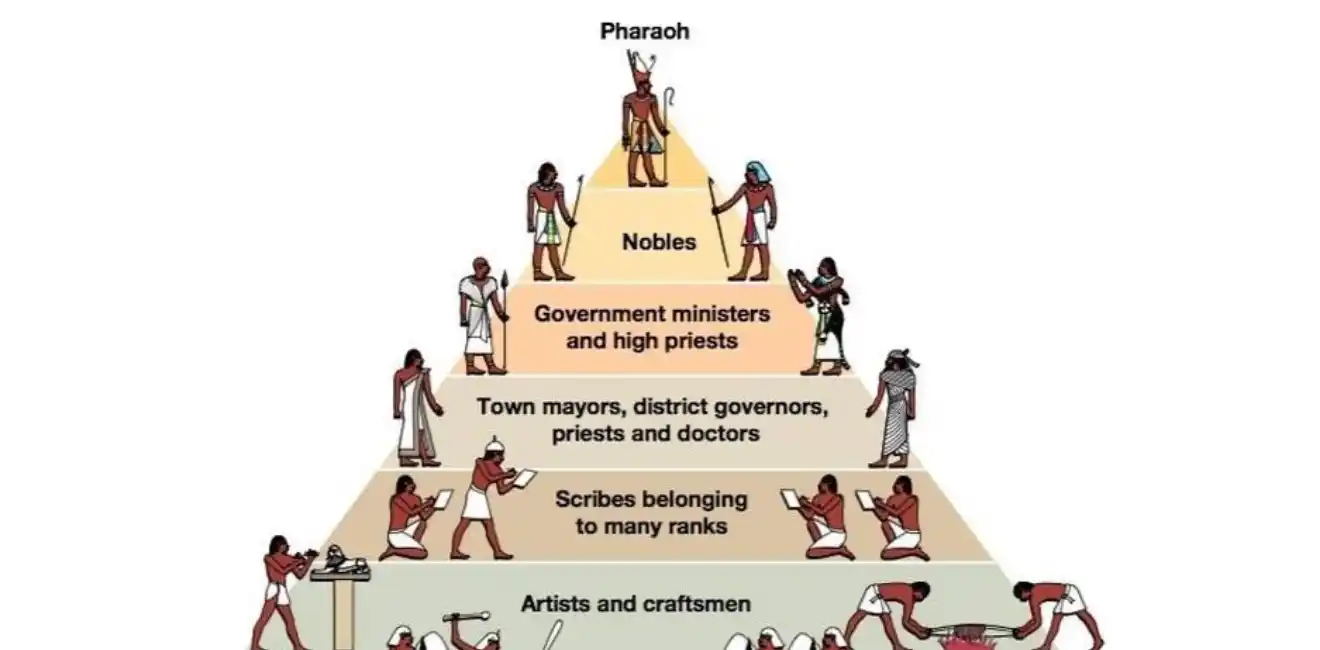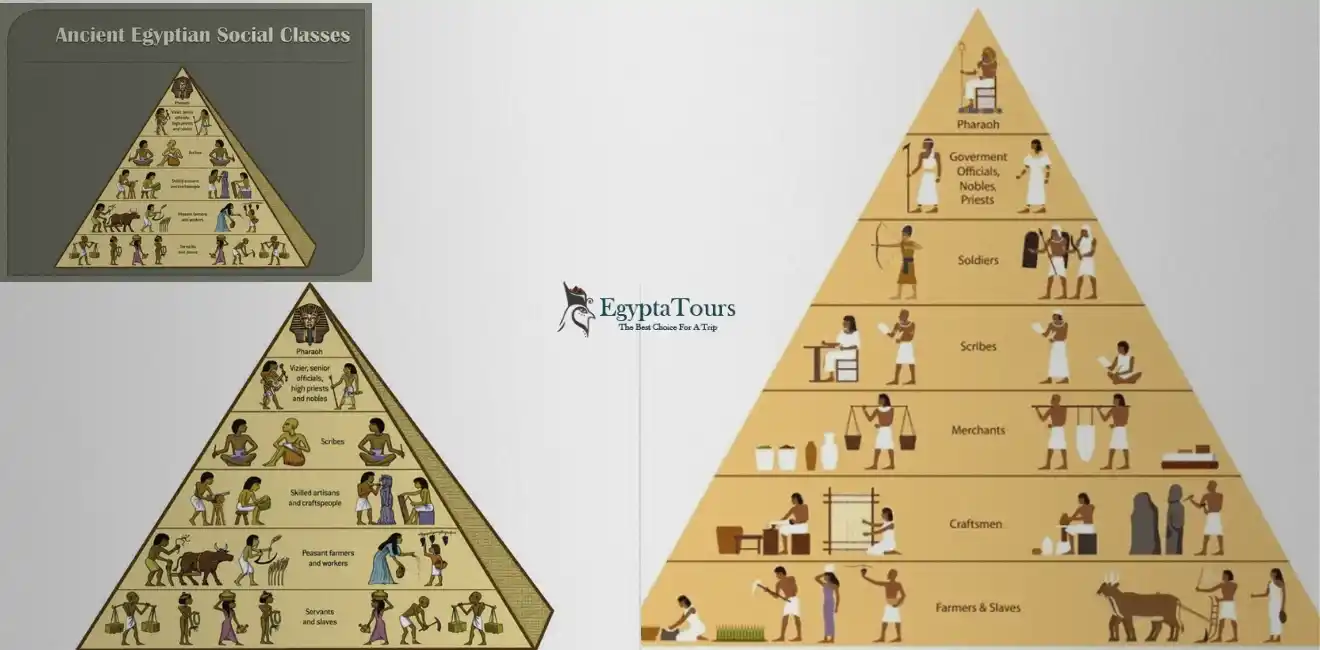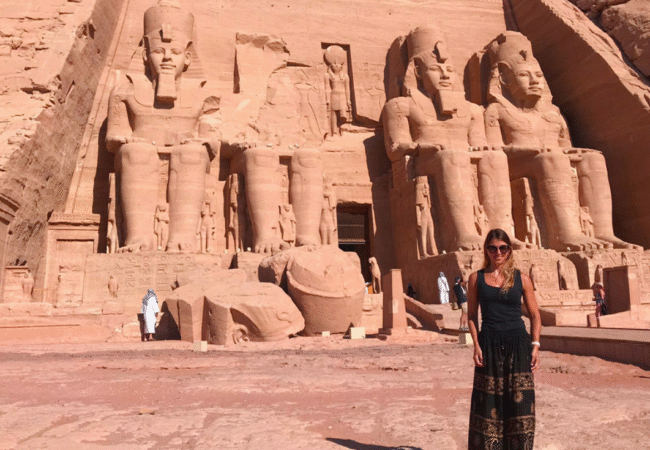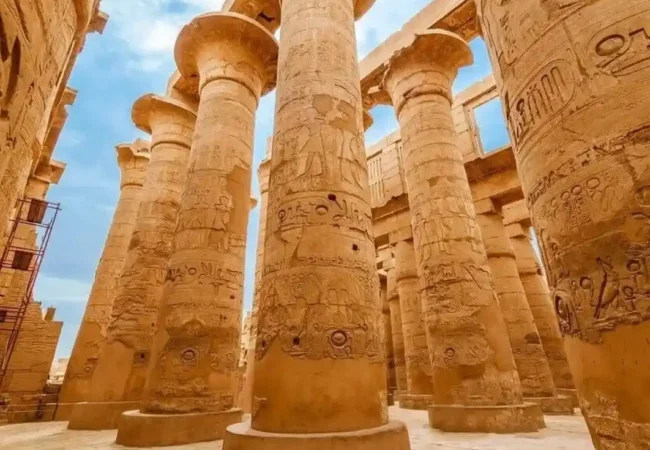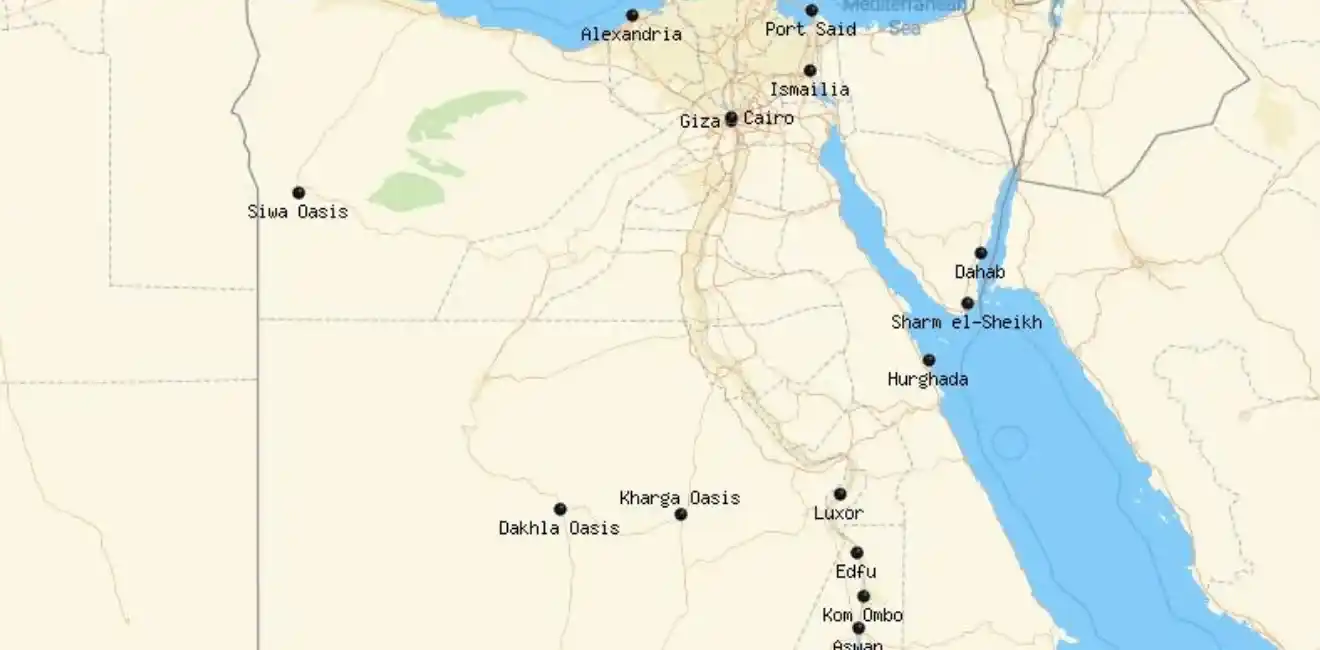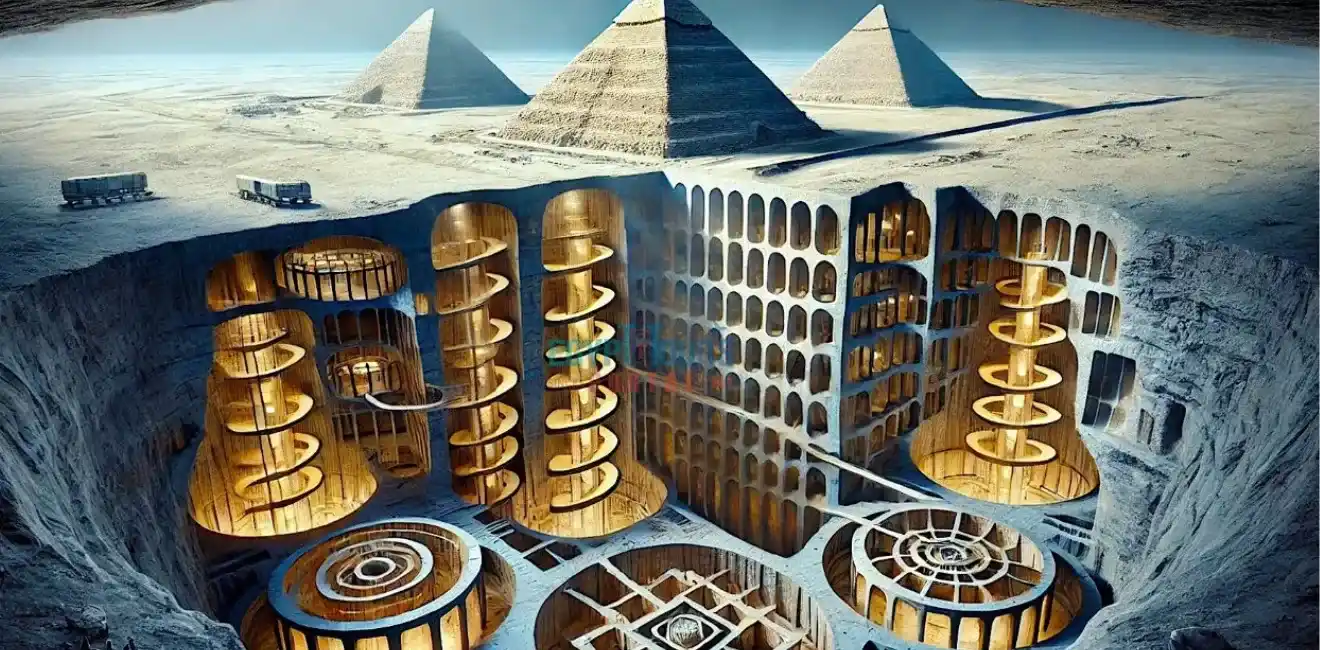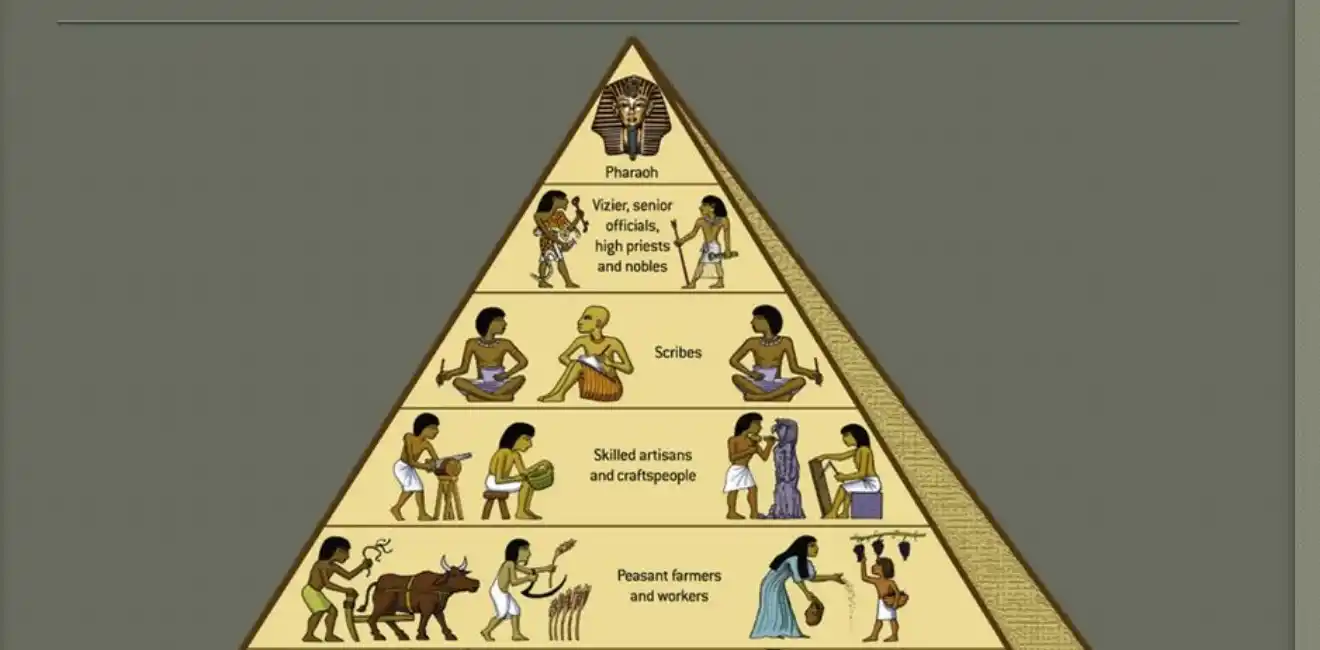
Ancient Egyptian Social Pyramid
The ancient Egyptian social pyramid consisted of a clearly and consistently arranged set of classes.
This system relied on the precise organization of each individual in society according to their role and function.
The pharaoh occupied the top of the pyramid with the classes gradually descending to workers and slaves at the bottom.
This arrangement helped maintain order and stability within the state and was directly linked to religious beliefs.
The ancient Egyptian social pyramid was based on a strict hierarchy emphasizing roles related to religion governance, and geography to maintain societal harmony. The pharaoh viewed as a living god led the social pyramid while strict class roles supported societal stability and resource management.
Religious principles such as Ma’at guided societal order and promoted justice balance, and unity influencing personal morality and state administration.
The Social Pyramid in Ancient Egypt
The ancient Egyptian social pyramid was a practical and ideological system designed to ensure societal stability and efficient resource management. This hierarchy rooted in divine authority was considered the natural order of life authorized By <strong>the Egyptian gods</strong>.
At the apex of this structure was the pharaoh believed to be a living god, and under his leadership each class played a specialized role in administration religion, or labor.
Unlike modern societies which offer opportunities for social mobility the social pyramid in Nile Valley Egypt was relatively fixed for most of its history.
Position was often inherited at birth in keeping with the belief that this structure reflected the cosmic order. However certain professions such as scribes or soldiers allowed for upward mobility through skill dedication, and the favor of the king.
This strict but functional system was vital in maintaining Egypt’s dominance over the centuries. Within the ancient Egyptian social pyramid the Nile Valley was uniquely organized to exploit the region’s resources.
The predictable flooding of the Nile also led to surplus crops enabling the growth of specialized professions and massive construction projects. Temples served as both spiritual and economic centers where governance blended with religious practices.
The shape of the ancient Egyptian social pyramid
The ancient Egyptian social pyramid was one of the most complex and enduring systems in human history supporting a civilization that flourished for over three thousand years. Ancient Egyptian society was centered around the fertile Nile Valley.
This stratified society served as a well-organized engine with each level of its hierarchy contributing to the collective prosperity of ancient Egypt.
The Amazing Rise of Ancient Egyptian Society and the Gods
Human habitation in the Egyptian desert dates back to around 8000 BC. Migration toward the Nile Valley led to the establishment of agricultural communities in the Fayum region by around 5200 BC. Pottery from around 5500 BC also reflects early settlement although the first settlement in Fayum dates back to around 7200 BC.
Fayum was a fertile and resource-rich region until around 4000 BC when drought forced its inhabitants to migrate toward the Nile Valley.
This movement marked the beginning of the formation of early Egyptian societies during the Predynastic Period (c. 6000–3150 BC), laying the foundations for future cities along the Nile.
To protect themselves from environmental challenges wild animals, and rival tribes people organized themselves into tribes relying heavily on their personal gods for protection. Their belief systems also evolved to explain natural forces they could not understand such as storms and drought.
These beliefs manifested themselves in three main forms:
- Animism: The idea that objects, plants animals, and the earth possess spirits.
- Fetishism: The belief in the supernatural power of objects such as the djed and the ankh.
- Totemism: The spiritual relationships between clans and specific ancient Egyptian animals, plants, or symbols.
Ma’at and the Social Order for a Balanced Society
The principles of Ma’at were the foundation of the ancient Egyptian social hierarchy symbolizing truth, balance, and justice as the guiding force of the universe and society. Ma’at was established by the gods at creation. Ma’at governed all aspects of life, from personal morality to state administration ensuring universal harmony and stability.
The pharaoh was viewed as the living embodiment of Ma’at upholding its principles by ensuring justice securing borders overseeing laws, and regulating natural cycles such as the Nile floods.
Egypt’s social hierarchy along the Nile reflected this divine order with each class performing a specific role. Priests maintained rituals nobles managed resources scribes ensured accounting, and farmers and workers sustained the economy.
Ma’at also shaped personal behavior with individuals being judged in the afterlife based on their adherence to its principles.
This collective harmony fostered unity and purpose although deviations from Ma’at such as corruption or injustice led to societal unrest and weakened ruling dynasties. Ma’at’s influence extended beyond Egypt’s borders influencing diplomacy and trade contributing to the stability and success of the civilization over thousands of years as a harmonious and enduring society.
Social Classes in Ancient Egypt
The ancient Egyptian social pyramid was clearly defined similar to a pyramid of power and population distribution. At the top were the pharaoh and his court while the broad base consisted of the workers and farmers whose labor sustained the civilization.
This pyramid consisted of the following levels:
The Divine Ruler and Central Authority
The ancient Egyptian pharaohs held absolute power as political leaders and religious figures. They were considered living gods embodying divine will and acting as intermediaries between the human and divine worlds.
The pharaoh was responsible for maintaining maat the cosmic order which required ensuring justice stability, and prosperity in the kingdom.
Djoser
Pharaohs such as Djoser (c. 2670 BC) and Ramesses II (c. 1279–1213 BC) left an indelible mark on history through massive construction projects, military campaigns, and religious reforms. For example Djoser ordered the construction of the Step Pyramid of Saqqara the first monumental stone structure in history, symbolizing his divine connection and eternal legacy.
Similarly Ramesses II’s victories, such as the Battle of Kadesh, and his architectural achievements such as the temples of Abu Simbel cemented his status as one of Egypt’s greatest rulers.
The Vizier
As the pharaoh’s closest advisor the vizier was the second most powerful person in Egypt. This role was established during the Early Period (c. 3150–2613 BC) and included oversight of all aspects of government from public works to judicial affairs.
Viziers such as Imhotep who served Djoser were not only administrators but also prominent architects and scholars. Imhotep is credited with designing the Saqqara pyramid demonstrating the intellectual and cultural contributions of this role.
Nomakhs (Regional Governors)
These officials administered Egypt’s provinces known as “nomes,” By <strong>the Old Kingdom (c. 2613–2181 BC)</strong>. Nomakhs wielded considerable power overseeing local administration and tax collection for the central government. However excessive independence among nomakhs sometimes led to the disintegration of the government during periods of pharaonic weakness.
Ultimately, the ancient Egyptian social pyramid was one of the most important reasons for the stability of the state for centuries. The class system also helped organize work and distribute tasks among people.
Each class knew its duties and performed them within an integrated system that served the state as a whole. This model proved successful in building a strong civilization that lasted thousands of years.
FAQS
What are the characteristics of social thought in some ancient civilizations?
Social thought in ancient civilizations was characterized by a focus on the class system and religion as the basis of relationships, and a precise definition of the individual’s role in society according to their function and status.
What was the social thought in ancient Egypt?
Social thought in ancient Egypt was based on the principle of Maat which links justice and cosmic order, and defines the role of each individual within a fixed hierarchy that served the state and religion.
What was the social system like in ancient Egypt?
The social system in ancient Egypt was strictly hierarchical beginning with the pharaoh at the top and progressing to priests nobles, and scribes then workers, peasants, and finally slaves.







